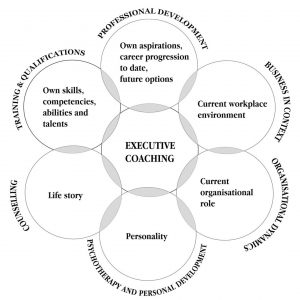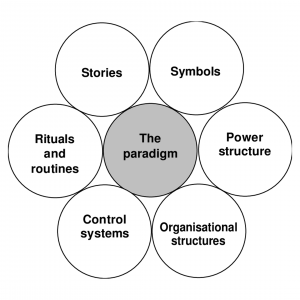PEOPLE, POLITICS OR PSYCHOLOGY OF PROJECTS
Look at any text book and it will tell you why projects fail, but simply reading a chapter in your MBA or an article from your course doesn’t always help in recognising the situation and seldom talks about the people, politics or psychology of failing which is what you’ll be dealing with if you are the project manager.
*What does the research say?
By speaking to experienced project managers Sam Elbeik and Mark Thomas attempted to identify the critical factors that must be addressed if a project is to be completed successfully. They developed a six stage process for managing projects: define, plan, build the team, lead and motivate, control communications, review.
Key success factors in rank order
1. Clearly defined objectives
2. Good planning and control methods
3. Good quality of project managers
4. Good management support
5. Enough time and resources
6. Commitment by all
7. High user involvement
8. Good communication
9. Good project organisation and structure
10. Being able to stop a project
*What is my personal experience of people, politics or psychology?
In coaching it is important to understand the Person, Role and System. This is important because these elements are key to project and/or change delivery.
You should consider;
1. The clients personality;
2. The clients life story;
3. The clients skills, competencies, abilities and talents;
4. Their aspirations, progression and future aim;
5. Their workplace and environment in which they perform;
6. Their current organisational role.

This may therefore include coaching, teaching, mentoring and consulting in different measures according to the needs and desires of the client.
Whilst the first list presents a logical reasons projects fail (objectives, methods, resources etc.,) the second I think is more honest and complex (about motivation, perception or purpose) and generally beyond the boundaries and experience of project and change managers.
Understanding Personal Agendas and potential thinking errors (list below) of project participants and shareholders can useful to understanding their perspective, decision-making and support for change.
1. All-or-Nothing Thinking / Polarized Thinking
2. Overgeneralization
3. Mental Filter
4. Disqualifying the Positive
5. Jumping to Conclusions – Mind Reading
6. Jumping to Conclusions – Fortune Telling
7. Magnification (Catastrophizing) or Minimization
8. Emotional Reasoning
9. Should Statements
10. Labeling and Mislabeling
11. Personalization
12. Control Fallacies
13. Fallacy of Fairness
14. Fallacy of Change
15. Always Being Right
16. Heaven’s Reward Fallacy
*The impact of culture on commitment, capability and completion.
The cultural web is a tool which allows you to question your current culture and start creating a new one more akin to the organisation’s needs. It identifies the six main areas that make up the working environment “paradigm”, the assumptions taken for granted within the organisation.
This is important because “Culture eats strategy for breakfast”. This is a famous quote from legendary management consultant and writer Peter Drucker. To be clear he didn’t mean that strategy was unimportant – rather that a powerful and empowering culture was a surer route to organisational success. Generally strategic change is delivered through projects: what is a project for if it’s not to facilitate or deliver the strategic aims of the business? So we need to take account of Culture.

1. Stories – past people and events still talked about by the organisation gives an insight into what the organisation holds in high esteem
2. Rituals and Routines – typical daily behaviour that is seen as normal determines what outcomes are expected, “the way things are done around here”
3. Symbols – any visual representations including logos, office appearance and dress code
4. Organisational Structure – both the defined structure and the assumed hierarchy indicate the value of each person’s contributions
5. Control Systems – measurements and reward schemes in place that emphasise expected behaviour
6. Power Structures – the groups that appear most powerful highlight the core assumptions
*Pulling all together, with some anonymized case studies
It is clear that there are a complex set of factors that have an impact on project or change delivery, more than those covered in most project management methodologies.
Note that the purpose here is not to say here is a problem and here is the solution. This is not an article offering simple solutions for straight-forward problems. Instead is it an exploration of some generic thorny problems that arise from the often conflicting pressures of Person, Role and System, Strategy and Culture.
Generic and Anonymised Case Study 1
In one organisation the new CEO keen to make a mark, but not rock the boat (Person, Role and System factor) was hesitant to pull the plug on a runaway project commissioned by the predecessor as a great technology leap forward. The business had poured money into a global IT provider in the expectation that the ‘strategic partner’ would transform their business. (Strategy factor) It was akin to getting into a taxi and saying here is £3m take me somewhere interesting. Without a clear strategy and ownership the business was an increasingly passive and rapidly becoming poorer passenger. Rather than argue or arbitrate the business continued to pay, whilst at the same time under-funding their in-house capability. The preference appeared to be to deal with a unresponsive supplier than demanding or dysfunctional staff. (Culture factor). It was if being a “hostage” to the project absolved the organisation of its responsibilities and agency. The new CEO took months to finally pull the trigger, but eventually did.
It would be easy to blame the problems on the present or past CEO, the people, process, and governance that defined the culture or simply poor project management to align roles, goals, controls to clear deliverables, product, payment and profit. But life is more messy than that, project and change management is as much art as it is science and as much psychology as it is planning.
Generic and Anonymised Case Study 2
A organisation seeking to grow from a loose federation of small businesses geographically spread into a consolidated global business bought an IT solution that would allow them to standardise, streamline and scale up. With significant investment funding they planned to jettison antiquated systems and parochial practises in favour of state-of-the-art solution. The formular for successful profitability had previously been competent senior fee earners and very little middle-management or bureaucracy, meaning no consistent policies, processes or procedures.
The key challenge therefore was as much about Strategy and Culture as it was defining, documenting and delivering new business processes using modern technology. The client ostensibly expected the IT supplier to be a mind reader or magician, and the supplier failed to anticipate or accommodate that the clients perceptions would be any different from their previous deployments.
The project dialogue might be summarised as Client: “This does not work the way we want” Supplier: “Oh, OK, that’s what others use, but we can change it, how do you want it to work?” Client: “Good question, we don’t know. What is the standard?” This debate would be ongoing with the time and materials clock running in turbo-mode.
There is a strong case for the project management to become more active in Strategy and Culture, ostensibly becoming management consultant defining the game rather than watching the play and keeping the score. The problem however is that unless invited by the leadership to take such a role, the reality is that a project manager’s responsibility is to deliver what was discussed (preferably agreed) and rather than challenge the scope and direction.
Generic and Anonymised Case Study 3
A variation on Case Study 2 is where Senior Management simply don’t do detail and the command “make it so” simply doesn’t understand the detail, complexity, manpower or time involved. This leads to unrealistic timescales, and under resourcing, and constant surprise “why is this late?” obliviously to the late nights and weekend working of colleagues trying to discuss, define, deliver and document all the necessary changes.
Every day there is a posting on LinkedIn “hire for attitude and train for skill” the problem is that no amount of can-do attitude can bridge the knowledge gap or put 48 hours into one working day. Cautious Kevin or Doom-monger Derek are ignored in favour of upbeat proclamations that make us feel good, but seldom deliver.
When people talk about overcoming resistance to change it seems often to marginalise, remove, silence or distance dissent (people who are meant to be your asset) rather than allow the time and dialogue which can be the catalyst for delivery.
Projects can be often compared to “The Emperor’s New Clothes” (by Hans Christian Andersen) about a vain emperor who seeks only approval, affirmation, accolade and agreement, disregarding the truth of their nakedness. Their comeuppance happens when eventually someone breaks the conspiracy to exclaim: “The Emperor’s is naked” and then we realise and acknowledge the deception.
A common theme
My instinct is that too much work, not enough resources, and other priorities (which are more interesting or important) is probably the biggest single factor. If people have the time and motivation to discuss, define, deliver and document then that participation and engagement will support the change that you want to see get done.
Competing demands from other projects/BAU activities can have massive impacts on project productivity as project estimates are often underestimated or do not consider these ‘other’ commitments and distractions when projects are in the planning stage. Furthermore Context Switching (where someone is involved in multiple projects) can also lead to as much as an 80% loss in productivity:
1 project: 100% working time available per project
2 projects: 40% working time available per project. 20% lost to context switching
3 projects: 20% working time available per project. 40% lost to context switching
4 projects: 10% working time available per project. 60% lost to context switching
5 projects: 5% working time available per project. 75% lost to context switching
Sadly, often Presenteeism prevails: The act of showing up for work without being productive. Being physically in your seat and looking dedicated is less effort and risky than being involved in projects, change and the associated politics, perceptions and people. Do the minimum and keep a low profile may be a good personal strategy but is seldom a good approach to projects and change.
In conclusion, the workplace is often the place where people act out their hopes, dreams, ambitions or fears. Successful change comes from understanding Personal Agendas and errors in thinking as well as relationships (politics, allies and enmities). It is as much about psychology as it is methodology, just like being in a family is about how we relate as well as what we do.
As a ICF Coach, Mediation Practitioner and APMG Change Practitioner, I can offer tools, tips and templates as well as facilitation and mediation to support communications and change.
Tim Rogers
Tim@AdaptConsultingCompany.com Mob 447797762051
https://www.linkedin.com/in/timhjrogers/
We offer #consulting, #coaching, #mentoring, #facilitation and #mediating to support individuals, teams and organisations.
#jersey #timhjrogers #prince2 #agile #waterfall #pmo #projects #lean #training #programmes
